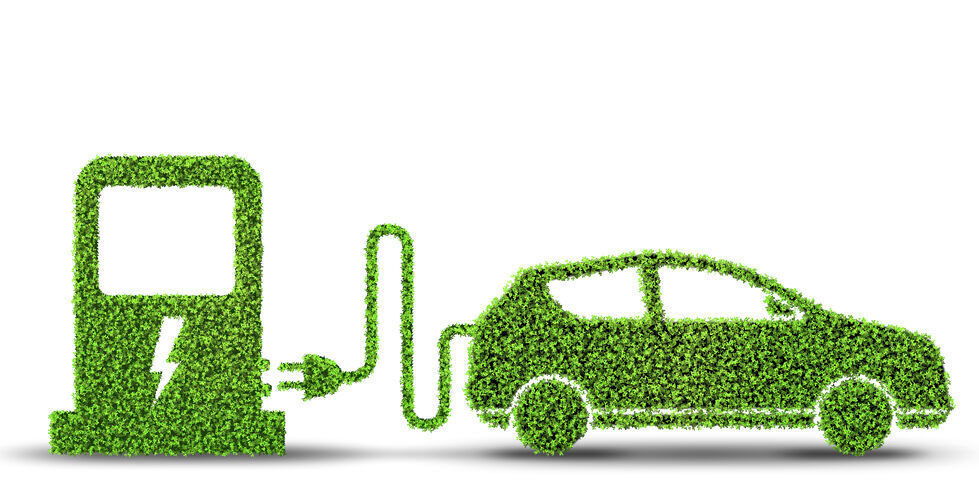- Business Solution
- ESG
What Awaits Japanese Automakers in the Future

"Japanese automakers are lagging behind in catching up with new movements." While the automotive industry is said to be undergoing an enormous "once-in-100 years" transformation, a certain number of people have doubts about the outlook for the survival of Japanese car manufacturers. Given this, Japanese automakers have quietly but resolutely started working on "clever strategies" to develop electric vehicles, along with other measures.
The European Commission has proposed the banning of internal combustion engine vehicle sales in 2035. Meanwhile, in the US, the Biden administration has also issued an executive order aiming at making half of all new passenger cars and light trucks "electric-powered" in 2030. The expression "electric-powered vehicle(s)" is a collective term for electric vehicles (EVs), fuel cell vehicles (FCVs) and plug-in hybrid electric vehicles (PHEVs).
China has already announced a policy of making half of all new vehicles sold in 2035 either EVs, FCVs or PHEVs. The government also seems to be planning for the remaining half to be hybrid electric vehicles (HEVs).
As if responding to these commitments announced by several nations, European automakers are launching aggressive EV strategies in rapid succession. In the United States as well, GM has put forth a policy of selling only EVs by 2035.
Amid this trend, Japan has also announced a policy that would result in all new fleets being composed of electric vehicles in 2035, but its plans for the breakdown of EV sales are still unclear. Japan, the first country in the world to commercialize mass-produced HEVs, was supposed to be a "leading nation in electrification," with HEVs projected to account for more than 40% of registered vehicles in the country. However, Japan now seems to be behind the curve in this area. Honda appears to be the only exception, standing out among Japanese automakers with its bold policy plan to sell only EVs and FCVs as new vehicles globally by 2040.
Taking a closer look at the strategies of Japanese automakers, however, it becomes clear that they are, in fact, making astute moves as they prepare to compete for survival. The leading company in this regard is probably Toyota Motor, which announced its strategy for in-vehicle batteries in September 2021.
At the beginning of its media briefing on batteries, Toyota said: "According to our calculations, the CO2 reduction effect of three HEVs is almost equal to that of one BEV (battery-powered electric vehicle)." The company also emphasized that HEVs represented a realistic solution because "[at] the moment, we can provide hybrids at comparatively affordable prices, and in places where the use of renewable energy is to become widespread going forward, electrification using hybrids is among the effective ways of reducing CO2 emissions." This view is in line with the opinion expressed by Toyota in the past that hasty efforts to make all cars EVs could be detrimental for millions of jobs in Japan.
Toyota's ingenuity becomes apparent when examining the following approaches. In addition to aiming at slashing the cost of its EV batteries by 30% or more, the company plans to improve power consumption (the amount of electricity used) per kilometer by 30%. The latter change would allow for minimization of the capacity of in-vehicle batteries. With these tactics, Toyota aims to cut 50% of the battery cost per EV during the late 2020s.
If they succeed in achieving their goals, they will not only save resources with minimized in-vehicle battery capacity, but will also improve product attractiveness by making their vehicles lighter. The goal of a "50% reduction in battery costs" is also a target of European automakers, but Toyota has an additional advantage in terms of product allure.
Motor-driven EVs have relatively high levels of thermal efficiency, and improving electricity costs by 30% is an extremely difficult challenge. Toyota, however, says that it plans to achieve this by improving numerous factors such as rolling resistance, air resistance, and brake drag.
A similarly sharp mindset can also be seen in the company's capital investment in in-vehicle batteries. Regarding future battery production capacity, Toyota said that it plans "to increase battery production capacity up to 200 GWh or more, from the currently planned 180 GWh, to respond to any possible cases in which the proliferation of EVs occurs more rapidly than expected."
Expanding battery production capacity is nothing new, but what should be noted here is how Toyota invests. Taking a closer look at its announcement, it can be seen that the company will invest five billion yen per GWh of production capacity, which is nearly 40% lower than the capital investment figures for major global in-vehicle battery manufacturers, which are around eight billion yen per kWh. Moreover, Toyota aims to reduce capital investment costs while keeping the production capacity per production line as low as 3GWh per year.
Toyota aims to establish production lines that can flexibly respond to fluctuations in EV demand. If a large-scale production line is built but the sales of EVs do not grow as expected, the rate at which the line is utilized will drop, and the company must suffer from the burden of investment costs.
Boosting the energy efficiency of EVs step by step and lowering capital investment by "improving efficiency" at battery factories are at the true core of Toyota's style of kaizen (or "improvement").
Automakers Embarking on Online Direct Sales
New ambition is also sprouting in the field of car sales. In October 2021, Honda launched its "HONDA ON" online store to sell new cars. The automaker started direct online sales by founding a subsidiary, "Honda Sales Operations Japan," which deals with such sales in addition to car sharing services. Honda is the first-ever Japanese automaker to make the complete purchasing process possible online, from consultations, quotations and assessments to sales contracts.
Although online car sales have already been introduced successively by European and US automakers, many of their services still remain at test-sales levels. This is due to the fear that online sales could result in conflict involving existing car dealers. Under such circumstances, Tesla US and Chinese EV makers, which are not tied to relationships with existing dealers, have positioned online sales as the mainstream channel, and their sales are increasing.
Online car sales do not require dealership profit margins, so if the current situation remains as it is, cost differences between existing manufacturers and new entrants will become obvious. It can be said that Honda embarked on its attempt to "cross the Rubicon" after carefully examining relationships with their existing dealers.
As such, it seems that the Japanese auto industry is taking steps forward, and a promising future awaits it. Rather than corporate policy, it is the policy of the Japanese government that is noticeably lagging behind. Regarding the introduction of renewable energy, which will determine whether Japanese automakers can continue producing their vehicles domestically, the government has set the goal of a 46% reduction in greenhouse gas emissions by 2030. There is, however, no clear pathway for reaching this destination. It will defeat the purposes of Japanese automakers if the country fails in the competition for survival.
This report was compiled by Yoshiro Tsuruhara on December 3, 2021. Two weeks later on December 14, Toyota announced its global sales target of 3.5 million EVs in 2030.
About Yoshiro Tsuruhara
Head of AutoInsight, Inc., Technology Journalist and Editor
After joining Nikkei McGraw-Hill (currently Nikkei BP), Yoshiro Tsuruhara started as a writer for a new material technology magazine and a mechanical technology magazine. He participated in the launch of Japan's first magazine targeting at automotive engineers, Nikkei Automotive Technology, in 2004 and became the editor-in-chief when the magazine was first published that year. In 2014, he founded and became the head of Auto Insight Co., Ltd., which specializes in content editing and production related to automotive technology and industry. His published books include Autonomous Driving - Disruptive Innovation that Changes Everything from Lifestyle to Electric Vehicles (co-authored; Nikkei BP), EV and Autonomous Driving - How to Change Cars (Iwanami Shinsho) and Industries Disappearing with Autonomous Driving (Mynavi Publishing).
For further details, please contact:
Nikkei Business Publications, Inc.
https://www.nikkeibp.co.jp/english/
NIKKEI BP

"Foresee the future, Unlock the insight" is the expression that describes our mission. As Japan's leading BtoB media service, we meet diverse business community needs in the three key categories of "management," "technology" and "lifestyle."
See More
